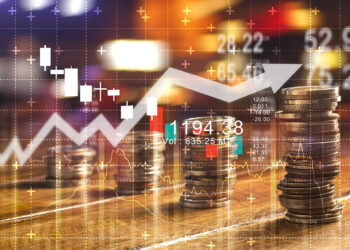China is confronting rising trade tensions with the United States from a position of economic strength, according to Reserve Bank of Australia deputy governor Andrew Hauser, who said Australian businesses are increasingly eyeing opportunities in the region.
Speaking at the Lowy Institute after a recent visit to China, Hauser said Chinese policymakers and business leaders appeared confident in their ability to absorb the impact of US tariffs.
The US shocked markets with a steep hike in tariffs on Chinese imports in what was dubbed “Liberation Day”. While both countries have since scaled back considerably, trade barriers remain well above historic levels.
Despite the disruption, Hauser said there was “striking confidence” in China’s capacity to sustain its growth target and absorb the trade shock.
The confidence appeared to rest on several factors: a strong commitment from the authorities to maintain economic growth around 5 per cent, a readiness to deploy further stimulus if required, and a belief that a significant portion of the tariff-related costs would be borne by the United States itself.
Hauser noted that almost half of China’s exports to the United States are in goods where alternative suppliers are limited, such as smartphones, lithium batteries and video game consoles, suggesting that higher costs may be passed on to American consumers.
“Indeed, the massive advance in technology use is one of the most striking impressions to any outside visitor,” he said.
“The pass-through of US tariffs to US consumer prices for such goods is likely to be high – perhaps explaining why many were quickly exempted.”
Moreover, Hauser said the RBA delegation saw little evidence that Chinese authorities would resort to a sharp currency devaluation to offset trade pressures, as they had in 2018–19.
“The inflationary impact of US tariffs on US consumers could, of course, be reduced if the Chinese currency were devalued substantially, as happened in 2018–2019,” he said.
“But we detected little expectation that this would happen, because China would want to avoid: insulating the United States from its own tariffs; provoking retaliation from other countries; triggering capital outflow of the kind seen around the 2015 devaluation; or undermining the political and social gains (including recognition of China’s economic and technological advance) perceived to flow from a stronger exchange rate,” Hauser said.
Australian businesses active in China – including those in banking, agriculture, healthcare and manufacturing – are also expressing cautious optimism, Hauser said, bolstered by a rebound in sentiment and confidence in Beijing’s willingness to support growth and pursue trade reforms.
“As part of our trip, we held a roundtable discussion, organised by AustCham Shanghai, with a large group of Australian firms active in China, across retail, agriculture, banking, finance, law, steel, healthcare, manufacturing and commercial property. What really struck me about that session was how upbeat most, if not all, of the firms were about the outlook for their businesses,” he said.
“The recovery in sentiment in early 2025, and confidence that the authorities would ‘do what it takes’ to sustain the economy was part of it.
“But there was also a sense that recent developments in trade policy could enhance their competitive position in Chinese markets.”
Hauser also noted that companies involved in iron ore and steel – Australia’s largest export to China – expect Chinese steel production to remain robust, near 1 billion tonnes annually, supported by domestic infrastructure investment despite a shift towards consumption.
However, he flagged the risk of increased competition from Chinese firms discounting output redirected from US markets. While the impact remains uncertain given limited overlap between Chinese and Australian production, he said the possibility is “clearly on the minds” of stakeholders across the Asia-Pacific.






